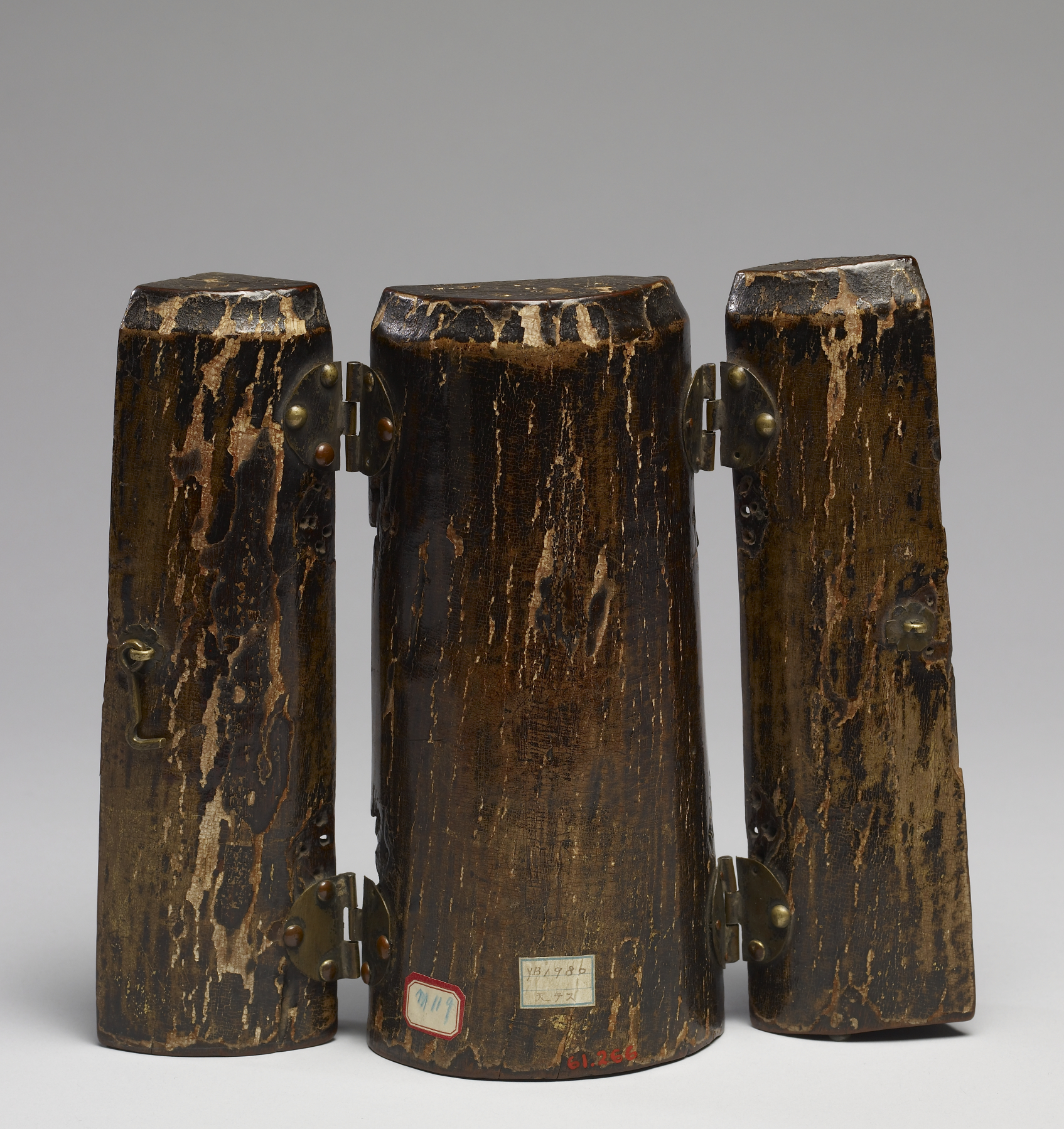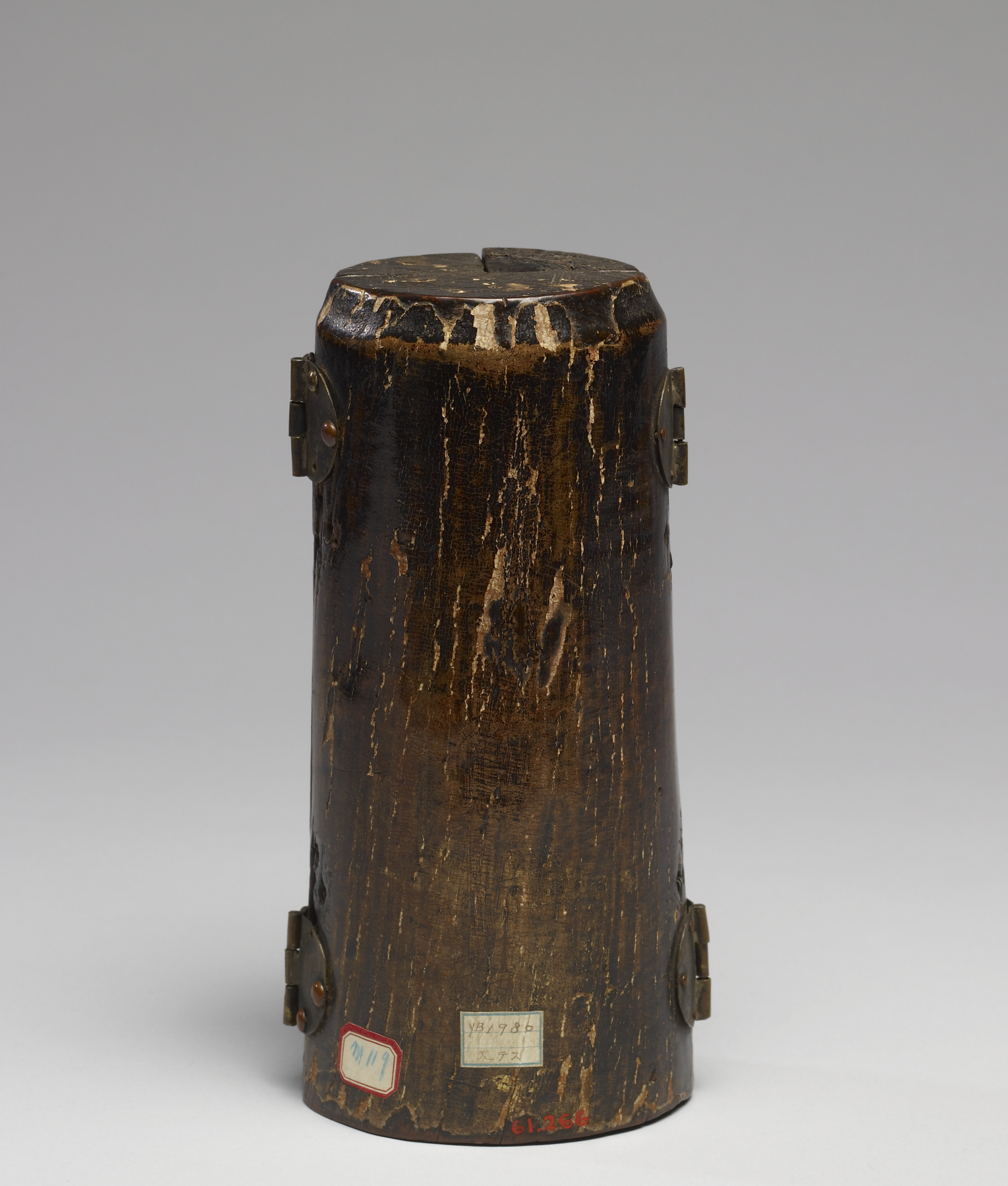Portable Buddhist Shrine
(China )
Pilgrims and itinerant monks used portable shrines for worship and teaching. In the central panel, the historical Buddha Shakyamuni (Siddhartha Gautama, ca. 563–483 BCE) preaches a sermon while surrounded by disciples, donors, and guardian deities. Above, a celestial Buddha from the distant past listens to the sermon from a three-storied pagoda. At the bottom, four musicians flank a stupa, a sacred mound or architectural structure that safeguards a relic of the Buddha or another venerated being. On the left and right doors, the bodhisattvas Manjushri and Samantabhadra are on their animal mounts. Below them are the 16 disciples of Buddha Sakyamuni, referred to as "arhats" in Sanskrit and "lohans" in Chinese.
Inscription
Provenance
Provenance (from the French provenir, 'to come from/forth') is the chronology of the ownership, custody, or location of a historical object. Learn more about provenance at the Walters.
Yamanaka & Co., New York; purchased by Henry Walters, Baltimore, 1920; by bequest to Walters Art Museum, 1931.
Exhibitions
| 2010 | Pilgrimage and Buddhist Art. Asia Society, New York. |
Geographies
China (Place of Origin)
Measurements
Open: H: 7 1/2 x W: 8 3/16 x D: 3 1/8 in. (19.1 x 20.8 x 8 cm); Closed: H: 7 1/2 x W: 3 3/4 x D: 3 1/4 in. (19.1 x 9.5 x 8.2 cm)
Credit Line
Acquired by Henry Walters, 1920
Accession Number
In libraries, galleries, museums, and archives, an accession number is a unique identifier assigned to each object in the collection.
In libraries, galleries, museums, and archives, an accession number is a unique identifier assigned to each object in the collection.
61.266










